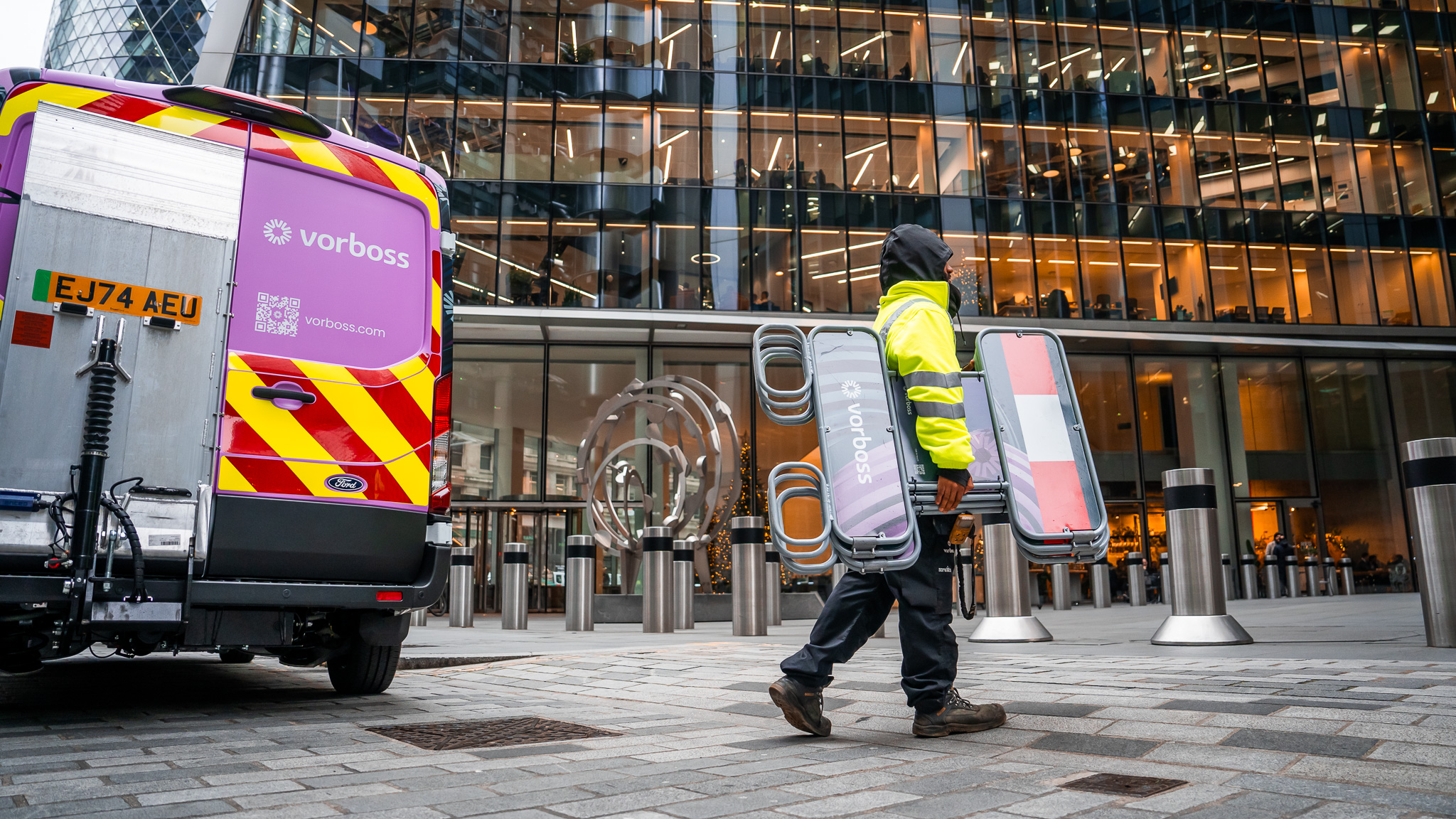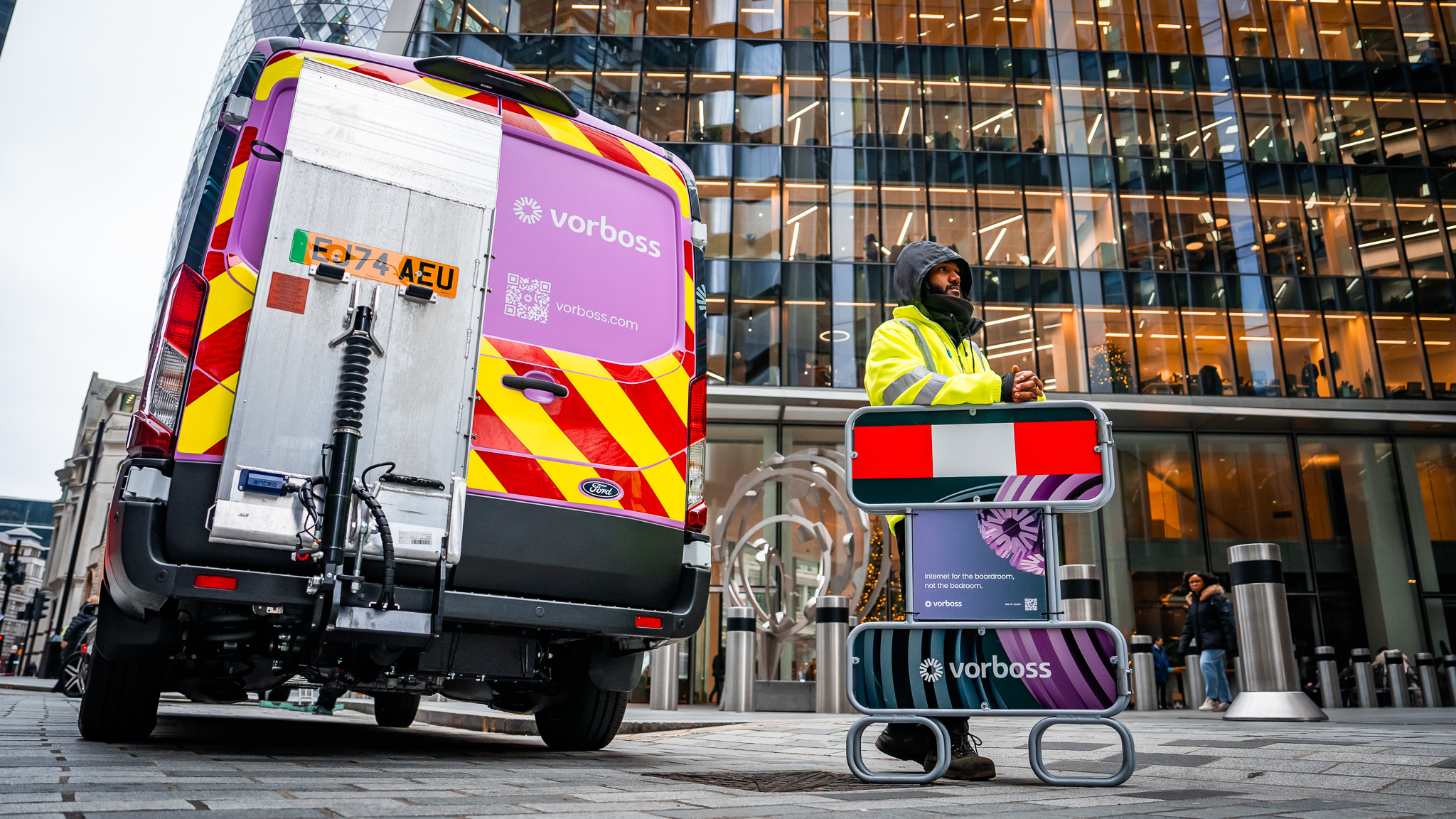How 1Gbps business internet is limiting your potential
July 17, 2023
|
4
min read

Highlights
1Gbps business internet, which is standard in London, hinders business productivity with slow data speeds and connectivity issues. Low bandwidth slows down daily tasks, affecting employee efficiency especially in the era of hybrid work that requires collaboration and remote access. Vorboss provides 10Gbps as standard, providing businesses in London with limitless connectivity and addressing future data requirements.
When was the last time you noticed your business internet's ability?
Whether it’s waiting to transfer a large file or trying to collaborate on a cloud-based app, your business internet directly impacts performance across your working day.
Yet, most companies are so used to the drawbacks of 1Gbps business internet that these time lags and glitchy delays have become normalised despite their drain on operations.
Simply put, 1Gbps internet limits the potential of ambitious businesses. It lacks the capability required in 2025, let alone in the near future, with peak internet traffic increasing 35% year-on-year and the imminent growth of AI tools.
But don't worry, there is another way (spoiler alert: it's 10Gbps business internet).
1Gbps = accepting limitations

1Gbps is the standard business internet in London, which is like buying an old sedan to win an F1 race. While it satisfies the most basic functions, it’s unsuited to modern demands, slow to accelerate, highly susceptible to breakdowns, and increasingly outdated with every passing month.
In short, it’s limiting your ability to drive faster and compete. Here’s why.
Impact of bandwidth on SaaS tools and team productivity
Software, data, people, and communication power modern businesses. Therefore, employee productivity is inextricably linked to internet capacity.
From Slack and Salesforce to Zoom and Zendesk, the average business uses 130 software-as-a-service (SaaS) tools for its communications, project management, accounting, and HR functionality.
Not to mention video streaming, file transfers, data analysis, and multimedia downloads. No matter your business’ core proposition, your operational efficiency relies on your business internet.
1Gbps’ low data bandwidth can slow down daily tasks, hamper productivity, and frustrate employees. With 10Gbps business internet, teams comple tasks 10X faster, and productivity (and employee morale) soar.
The business impact of high bandwidth internet is immediate and tangible. So why limit your bandwidth in the first place?
Boost remote work with high-speed business connectivity
Hybrid working is here to stay.
In June 2024, Central London workers came into the office on average 2.7 days per week, half a day longer than a year prior, with most employers supporting remote work in some capacity. And a good commercial internet connection is essential for private VPNs that allow remote users to access private company data.
Reliable online connectivity enables remote employees to access resources easily, participate in virtual collaboration effectively, and work productively. On the flip side, frequent connection drops interrupt important tasks and adversely impact customer service and employee morale.
1Gbps business internet does not provide enough reliability to banish connectivity concerns. Wouldn’t it be great if you could ensure uninterrupted connectivity for all your employees?
Prepare for the data surge: upgrade to flexible business internet

Think about how many cloud-based apps your business currently uses. Now, think about how much you will use in the near future when more game-changing AI products hit the market and quantum computing becomes the norm.
With data requirements doubling every two years, you need internet that can flexibly scale to your evolving data processing needs and easily handle more users as your business expands.
1Gbps business internet might satisfy your basic requirements today, but you need to plan for the impending surge of new data requirements to remain competitive. So why not get ahead of your rivals now instead of playing catch-up down the line?
Does bandwitdh affect customer experience?

How do you work with your clients or customers?
If your company uses real-time collaboration tools like Miro whiteboards to brainstorm ideas or Zoom conferencing services to host interactive webinars or even basic video calls, then reliable connectivity is your lifeblood; these tools don’t work if there isn’t enough bandwidth.
But, limited connectivity also impedes customers' online interaction with your business, such as unresponsive customer service or slow-to-load digital products, leading to frustrated customers, negative brand reputation, and ultimately a loss of business.
1Gbps’ limited connectivity might work now, but if you take on more customers or need to fulfil more orders, you may find yourself stuck in first gear with no way to accelerate. Why run the risk?
10Gbps = going limitless
It’s unlikely you’d accept ‘standard’ with any other part of your business, so why accept ‘standard’ with your business internet?
As technology develops, costs fall and the playing field changes. Netflix’s affordable subscription streaming made us forget about TV scheduling. Mobile network providers' unlimited packages made us forget about the cost of phone calls.
Now, 10Gbps business internet is having an effect, helping us forget about connectivity and reliability issues while making your business more productive and scalable. Businesses all across London are waking up to this, and the ship is turning. At Vorboss, we provide 10Gbps as standard (rather than the limit), as that's a sensible, technical minimum in 2023.
And, as we own the network, maintain the cables, and directly provide the customer connection, we can easily scale your data requirements as you grow, future-proofing your long-term business growth.
Without the limitations of 1Gbps, you’ll never notice your business internet again.
Book a consultation to find out why businesses are switching to Vorboss.
Tell us about yourself so we can serve you best.
Got a question?
More articles

For many landlords and building managers, the word “wayleave” feels like the responsible route whenever a fibre circuit is being installed on their property. It sounds formal and safe – a neat legal box to tick.
In many cases, however, a wayleave adds unnecessary complexity and delays, frustrates tenants, and can expose landlords to long-term legal risks.
At Vorboss, we’ve connected thousands of office spaces across London without a wayleave, keeping landlords in full control and getting tenants online faster.

What is a wayleave?
A wayleave is a written agreement between a landowner and a telecoms operator. It gives the operator permission to install and keep equipment on private property.
What many people don’t realise is that signing a wayleave also activates “Code rights” under the Electronic Communications Code. These rights go beyond simple permission, they give the operator legal powers to stay on the property indefinitely, access it when needed, and even refuse removal of their equipment in certain situations.
For a typical connection into a commercial building in London, a wayleave can make the fibre installation process slower, more expensive, and limit the landlord’s flexibility long term.
Why a wayleave isn’t required for standard in-building fibre connections
For a standard in-building fibre connection serving a tenant, a wayleave isn’t a legal requirement. Important protections, like building access, fire safety, repairing any damage, and removing equipment, are already covered by the tenant’s lease and usual building rules.
If no wayleave is signed, no Code rights are triggered, meaning the landlord retains full control and the installation exists under a simple, fully revocable licence.
In practice, this gives landlords far more protection and flexibility:
- No legal lock-in – the telecoms operator has no long-term rights to stay or refuse removal.
- Landlords keep full control – equipment can be moved or removed when the building changes.
- Faster fibre installation – no time lost in drafting contracts or solicitor reviews.
- Happier tenants – connections go live quicker; tenants get to move in faster.
By contrast, signing a wayleave and granting Code rights introduces a complex and expensive legal process for any fibre removal or relocation. This can take at least 18 months, plus potential court or tribunal proceedings, making it slower, and far less flexible for the landlord.

Public services across central London are evolving, and the City of London Corporation is leading the way.
Whether you work, live or study in the Square Mile, you’ll soon feel the difference that faster, more dependable connectivity brings.

What is the Future Network Programme?
The City of London Corporation is rolling out the Future Network Programme, a major project to modernise its entire digital infrastructure and bring everything under one unified network.
From offices and schools to iconic green spaces like Hampstead Heath, cultural destinations like the Barbican, and historic markets such as Leadenhall and Old Spitalfields, this upgrade will mean more reliable connectivity across the City’s buildings and public spaces.
It also extends to essential services, including critical sites run by the City of London Police. This enhanced connectivity will support everything from secure communication systems to faster, more resilient networks for emergency operations.
Leading this transformation is Roc Technologies, supported by Juniper Networks and Palo Alto Networks; all powered by the Vorboss fibre network. Together, we’re bringing the City onto a modern digital foundation that’s ready to support its future.
Who the Future Network Programme benefits and how?
The programme is designed for everyone who depends on public services in the Square Mile:
- Students in City-run schools will have fast, reliable connectivity to fully access digital learning tools.
- Public-sector teams will experience smoother hybrid working, better access to online platforms, and more efficient collaboration across locations.
- Residents and visitors will see improvements in public Wi-Fi, digital services, and online access in libraries, community hubs, and other shared spaces.
- The City of London Police will gain a more secure, faster and resilient network that enhances CCTV reliability and enables more effective frontline operations.

.avif)

.avif)

